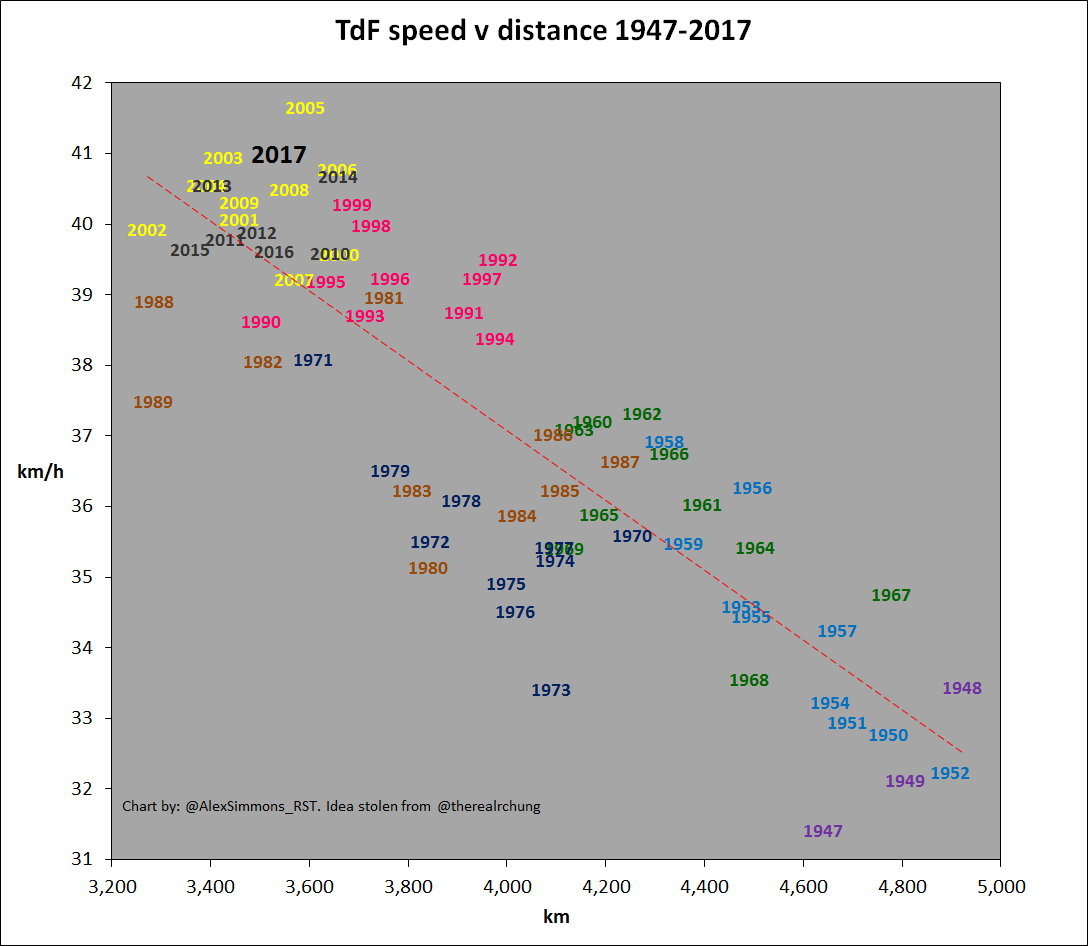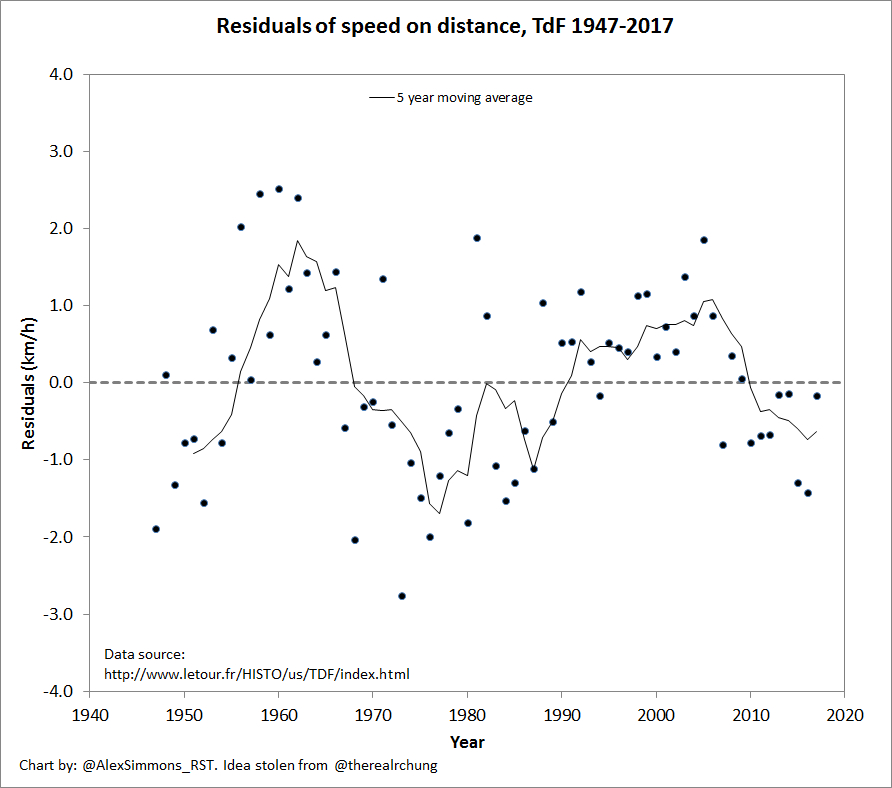- Mar 10, 2009
- 2,973
- 5
- 11,485
Re:
When I did my ADH climbing speed chart, I averaged the speed of top 5 ascent times for each year it was raced.vedrafjord said:I posted the same link in a different thread but having given it a bit of thought I have a few issues with the analysis as presented. It's not clear at all from what's published how much normalising for length/time/stage number are modifying the basic values. Also if it's only the top 3 on GC then box plots aren't a very clear way of presenting things, and imply more data than is there (ideally I'd find a way to make one performance by one rider one point on the graph, even if the box plot was still underneath). If there are big variations in the top 3 doping vs say the rest of the top 10 then that should be obvious from the graph.
If you include the top 10 (or even top 6 - I think vetooo has W/kg for top 10 for almost everything and top 6 for one other) then you get rid of the random effect of crashes and noise to some extent too - imagine how different the 2014 top 3 W/kg might be with Froome and Contador in the top 3 vs Páraud and Pinot.
Overall even if it's not perfect I still think it's useful. It's funny how 2008 when the French were in charge of antidoping and caught a load of riders, vs 2009 when UCI were in charge, AICAR (allegedly) entered the fray, and Contador went thermonuclear on Verbier, are still the two extremes ten years later.








